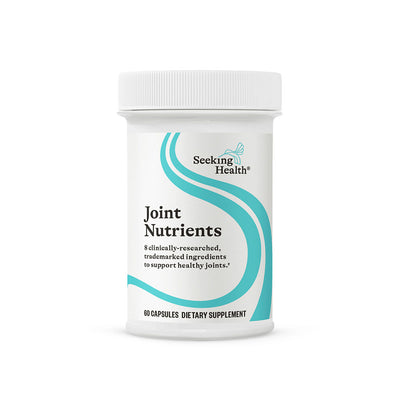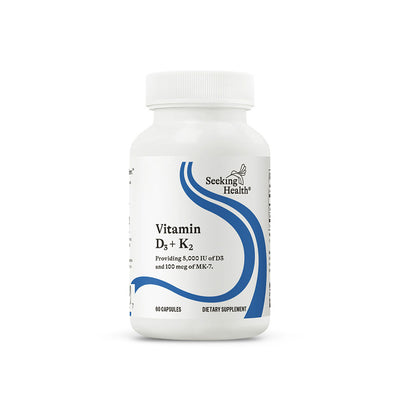Monk fruit and stevia are the alternative sweetener darlings of the low-carb and keto worlds. Have you ever wondered what the difference is between them? Do these natural sweeteners taste good? How do they affect your glycemic balance? Are they actually beneficial? Does monk fruit or stevia better support your health?
Choosing the best sugar substitute can feel like a complicated business. There are a dizzying array of products within the monk fruit and stevia realms. Processing, versatility, and taste are important factors to consider, too.
So how do you know which lower-calorie sweeteners are right for you?
This article will clear up the confusion between monk fruit and stevia. You’ll be able to see the differences to make the right choice for your health needs.
What is Monk Fruit?

Monk fruit is a natural low-carb sweetener that has gained popularity in recent years. But it’s not new. It has been grown for thousands of years in the remote Guilin mountains of southern China. It is named after the Buddhist monks who first cultivated it for its sweetness.
Monk fruit is known throughout Southeast Asia as Luo Han Guo. It has been used in Traditional Chinese Medicine (TCM) as an herbal tonic since the 13th century. According to TCM, monk fruit has “cooling properties” and works as a general palliative.
Monk fruit grows on a vine and looks like a small green gourd with pale flesh. It is related to melons, cucumbers, squash, and other members of the cucurbit family to which it also belongs. Monk fruit degrades and goes rancid quickly after harvesting. It is often boiled and dried to extend its shelf-life. This process changes the color of both the rind and flesh to brown.
Fresh monk fruit is not sugar-free. It contains glucose and fructose. It also contains several mogrosides, the most abundant and sweetest of which is mogroside V. Mogrosides have antioxidant properties and impart calorie-free sweetness. They cannot be digested or absorbed by the body. (1)
Mogrosides have antioxidant properties and impart calorie-free sweetness.
Monk fruit sweeteners are made by crushing the fruit, removing the seeds, and extracting the juice. Processing removes the glucose and fructose, leaving the calorie-free, sweet mogrosides. Monk fruit sweetener is often found in granules or powder forms. It may be minimally processed, containing some glucose or fructose and a small number of calories. It may also be fully processed and contain zero sugars or calories.
Mogrosides can be up to 250 times sweeter than table sugar. That’s why a tiny bit of pure monk fruit packs a super sweet punch. Monk fruit is often blended with bulking agents to make measuring, pouring, and usability easier. These added ingredients may include inulin fiber, other sweeteners like erythritol or xylitol, or even regular sugar. Read labels carefully when you buy monk fruit sweeteners.
Monk fruit and monk fruit products are Generally Recognized As Safe (GRAS).
Health Benefits of Monk Fruit
Research using animal models confirms the healing properties of monk fruit’s mogroside antioxidants. Monk fruit extract also contains beneficial flavonoids that contribute to the potential benefits of this fruit for human health.
Antioxidant Benefits
There are notable antioxidant properties of mogrosides for sugar metabolism. In rodents, mogrosides have been shown to reduce potentially harmful reactive oxygen species (ROS) resulting in:
- Improved insulin production
- Improved insulin response
- Reduced circulating sugar
- Reduced oxidative stress in pancreatic beta cells
Monk fruit flavonoids have been shown to support oral health by inhibiting opportunistic pathogens. These include Streptococcus mutans and Porphyromonas gingivalis, the bacteria that cause cavities and gum disease. Candida albicans, which causes oral thrush, can also be inhibited by flavonoids. (2, 3, 4)
Healthy Cell Metabolism
In mice, mogrosides have been shown to upregulate the expression of protective genes. Mogrosides also have the potential to be protective against diseases of the colon and throat. Additionally, mogrosides may be able to inhibit histamine release and relieve allergies, support lung health, and improve exercise tolerance. (5, 6, 7, 8, 9)
Low Carb, Keto, & Blood Sugar Levels
Pure monk fruit sweetener has no carbohydrates or calories. It can be used as an acceptable low glycemic sugar substitute. This has been demonstrated in animal models where mogroside V has been shown to improve sugar metabolism, reduce liver damage, and improve insulin resistance. Mogroside V also stimulates insulin secretion, which may contribute to its potential for sugar support. (10, 11)
Monk fruit sweeteners can make it possible for people on low-carb and keto diets to enjoy some sweetness in their diets while keeping their carbs in check.
Downsides of Monk Fruit
Monk fruit has several benefits. But it’s not a perfect option.
If you’re looking for pure monk fruit, you may have to order it online. Monk fruit products without any additives and bulking agents can be difficult to find in stores.
Reading labels is important. Some monk fruit products contain other sweeteners. The popular Lakanto Monkfruit Sweetener contains more erythritol than monk fruit.
Monk fruit has been shown to stimulate insulin secretion. It may not be good for people who have chronically high insulin levels.
Sugar alcohols like erythritol and other bulking agents, which may be added to monk fruit, can cause stomach upset.
How to Use Monk Fruit

Monk fruit is heat stable and can be used to sweeten just about anything, including:
- Hot and cold drinks
- Sauces
- Desserts
- Shakes
- Smoothies
- Baked goods
- Electrolyte refreshers
What is Stevia?

Stevia is a popular calorie-free sweetener. The stevia plant is an herb native to South America. Its leaves are naturally sweet and calorie-free. Stevia has been used for thousands of years in various South American cultures as both a sweetener and as medicine. (12)
Two steviol glycosides—stevioside and rebaudioside—provide the sweetening properties of stevia.
- Stevioside is 250 to 300 times sweeter than sugar.
- Rebaudioside is 350 to 450 times sweeter than sugar.
About one-fourth teaspoon of natural ground stevia leaves is equivalent to one teaspoon of sugar. However, if you’re using pure stevia extract, just 1/80th of a teaspoon is equivalent. Although you can purchase pure stevia leaf, most of the products you’ll find on store shelves are powdered or liquid extracts containing one or both glycosides.
Stevioside tends to have a bitter aftertaste. Many products only contain rebaudioside because it is less bitter.
Stevia extract is often combined with bulking ingredients to make measuring, pouring, and usability better. These can include sugar alcohols like erythritol or xylitol, as well as processed corn-based sweeteners like dextrose and maltodextrin. When buying stevia sweeteners, be sure to check the labels carefully.
The Food and Drug Administration (FDA) has determined that only processed and refined stevia products are Generally Recognized As Safe (GRAS).
Health Benefits of Stevia
Stevia research has been done on animals and humans. Its benefits primarily come from being low-carb, but it may also support dental health and blood pressure.
Low-Carb, Keto, & Blood Sugar Levels
Like pure monk fruit sweeteners, stevia is free of carbohydrates and calories. It can be a low glycemic sugar substitute for those who require blood sugar support. In rats fed with a high fructose diet, oral stevioside increased insulin sensitivity and reduced blood glucose levels after meals in a dose-dependent manner. The same study also found rats that required sugar support and were given stevioside required less insulin. Both stevioside and rebaudioside have been shown to increase insulin production. (13, 14, 15)
Similar to monk fruit, stevia can make it possible for low-carb and keto dieters to enjoy sweets while keeping their carbs in check.
Oral Health
Stevia can reduce certain bacteria in the mouth when it is used in chewing gum. Cariogenic Streptococcus mutans is a type of bacteria that live on teeth and cause tooth decay. (16)
Blood Pressure
Stevia can cause vasodilation of the blood vessels. This may lower blood pressure. (17)
Is Stevia Bad for You?
Monk fruit has a few downsides. As you’ll see, stevia may have some benefits, but the downsides and side effects are far higher.
Fertility Concerns
Historically, stevia was used as a form of birth control among the Indigenous cultures of Paraguay.
An old study from 1968 suggested that stevia could reduce fertility, at least in female rats. After receiving daily doses of a concentrated stevia solution, fertility was reduced, an effect that lasted for 50 to 60 days after stevia intake was stopped. More recent research found that stevia reduces sperm count and testosterone levels in male rats. It can also reduce the size of the testis, seminal vesicles, and the cauda epididymis. Stevia is clearly not recognized as a form of birth control. But if you're trying to get pregnant, you may consider reducing or avoiding stevia. (18, 19, 20)
Steviol glycosides have a steroidal structure that may give them the potential to act as endocrine disruptors. In human sperm cells, steviol was shown to decrease progesterone receptor response and increase progesterone production. (21)
Highly Processed
Most of the stevia sold in grocery stores is Truvia. This is a highly-processed product developed by big food giants Coca-Cola and Cargill. Truvia contains hardly any stevia. It is 85% erythritol and contains “natural flavors” that could be anything.
Stevia has been found to contain counterfeit ingredients that are not listed on the product label.
Common counterfeit food additives include maltodextrin, saccharin, sodium cyclamate, and aspartame. (22)
Stevia without additives is still highly processed. Crude extract and pure stevia leaf are not recognized as GRAS, so all of the stevia products available on store shelves must be refined.
Insulin Problems
Stevia may stimulate insulin secretion like some other low-calorie and artificial sweeteners. It may not be good for you if you have elevated insulin levels.
Digestive Distress & Allergic Reactions
Stevia is often combined with other ingredients, like sugar alcohol. Erythritol and other bulking agents may cause digestive discomfort.
Stevia is part of the Asteraceae plant family that ragweed belongs to. People who are allergic to ragweed may have allergic reactions to stevia.
Physical Side Effects
Stevia may be contraindicated for people with chronic low blood pressure since it can have a dilation effect on blood vessels. (23) It has been reported to cause bloating, nausea, dizziness, muscle pain, and numbness.
Stevia is a known diuretic. People taking certain medications may want to avoid stevia for this reason. (24) In mice, long-term stevia consumption was shown to cause liver and kidney damage. (25)
How to Use Stevia
Stevia is heat stable and can be used to sweeten just about anything, including:
- Hot and cold drinks
- Sauces
- Desserts
- Shakes
- Smoothies
- Baked goods
- Electrolyte refreshers

The Bottom Line
Both monk fruit and stevia are naturally sweet plants. Both provide low-calorie or zero-calorie alternatives to sugar.
While monk fruit and stevia both have the potential to provide health benefits as sugar alternatives, stevia has many more potential downsides.
Seeking Health now uses monk fruit to sweeten its collection of Seeking Health Optimal Electrolyte supplements because there are more benefits and fewer downsides.
You can find Optimal Electrolytes and other high-quality, bioavailable supplements at SeekingHealth.com.†
References
- https://www.ncbi.nlm.nih.gov/pmc/articles/PMC3854338/
- https://pubmed.ncbi.nlm.nih.gov/20183321/
- https://www.ncbi.nlm.nih.gov/pmc/articles/PMC3854338/
- https://pubs.acs.org/doi/abs/10.1021/jf201207m
- https://www.tandfonline.com/doi/full/10.3109/13880209.2013.867451
- https://www.ncbi.nlm.nih.gov/pmc/articles/PMC3813191/
- https://pubmed.ncbi.nlm.nih.gov/15684476/
- https://pubs.acs.org/doi/abs/10.1021/jf201207m
- https://www.mdpi.com/2072-6643/8/6/360#abstract
- https://www.sciencedirect.com/science/article/abs/pii/S1756464619304906
- https://pubmed.ncbi.nlm.nih.gov/21351724/
- https://www.ncbi.nlm.nih.gov/pmc/articles/PMC3141138/
- https://pubmed.ncbi.nlm.nih.gov/16278783/
- https://pubmed.ncbi.nlm.nih.gov/10690946/
- https://pubmed.ncbi.nlm.nih.gov/15375798/
- https://www.ncbi.nlm.nih.gov/pmc/articles/PMC7335598/
- https://www.ncbi.nlm.nih.gov/pmc/articles/PMC7059728/
- https://pubmed.ncbi.nlm.nih.gov/17744732/
- https://pubmed.ncbi.nlm.nih.gov/862810/
- https://pubmed.ncbi.nlm.nih.gov/10619379/
- https://www.sciencedirect.com/science/article/abs/pii/S0303720716300533
- https://www.sciencedirect.com/science/article/abs/pii/S0924203116300157
- https://www.ncbi.nlm.nih.gov/pmc/articles/PMC7059728/
- https://pubmed.ncbi.nlm.nih.gov/32031079/
- https://www.sciencedirect.com/science/article/pii/S1319016420301997
‡ This information is for educational purposes only. No product results are implied.











